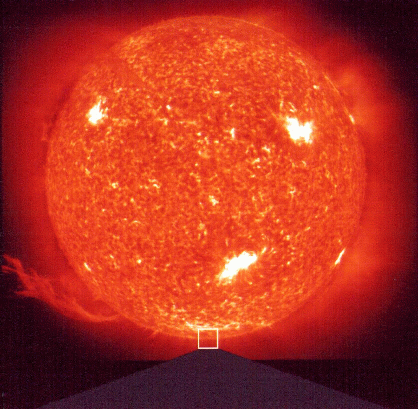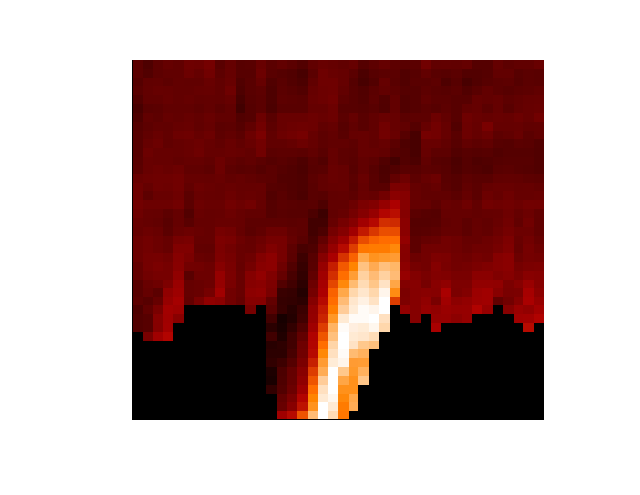CDS TORNADOES PICTURE
SOHO DISCOVERS SUPER-HOT, SUPER-FAST SOLAR TORNADOES


A gyrating high-speed storm wider than Africa projects like a chimney
from the south pole of the Sun, in the lower picture. It is one of a
dozen such tornadoes found by the SOHO solar spacecraft of ESA and NASA.
The scanning spectrometer CDS, built and operated by a British-led team,
made the discovery. It has imaged this previously unknown type of
feature of the Sun's weather in gas at 250,000 degrees C. Measurements
reveal flows of around 150 kilometres per second, or 500,000 kilometres
per hour. For comparison, tornadoes on the Earth blow at 400-500
kilometres per hour.
The colouring of the image shows, not the intensity of the emission, but
the speed of the gas in the tornado. In the lighter right-hand side, the
gas is moving towards SOHO, and away from SOHO in the darker left-hand
side. The speed measurements come from shifts in the apparent wavelength
of an emission from charged oxygen atoms (Doppler effect). The immense
size of the tornado is apparent from the comparison with the Earth on
the same scale.
David Pike of the Rutherford Appleton Laboratory and Helen Mason of
Cambridge University are joint authors of a report of the tornado
discovery, prepared for the journal Solar Physics. They deduce that the
hot gas in the solar tornadoes spirals upwards through the Sun's
atmosphere (downwards in the south polar image) and is flung into space.
Theorists now wonder what contribution the newly discovered tornadoes
make to the solar wind that buffets the Earth's space environment and
can harm satellites and power supplies.
The upper picture, used to show the position of the tornado, was
obtained on a different date by EIT, which is SOHO's extreme ultraviolet
imaging telescope. EIT keeps a daily watch on the Sun's weather at four
different ultraviolet wavelengths. The emission that made this image
came from gas at 80,000 degrees C, usually occurring fairly low in the
Sun's atmosphere except in prominences. Here one prominence (bottom
left) has erupted away from the Sun. EIT was contributed to SOHO by a
French-US team.
Built in Europe for the European Space Agency, SOHO carries twelve sets
of instruments provided by European and American investigators and it
was dispatched into space on 2 December 1995 by a NASA launcher. SOHO is
a project of international cooperation between ESA and NASA.




